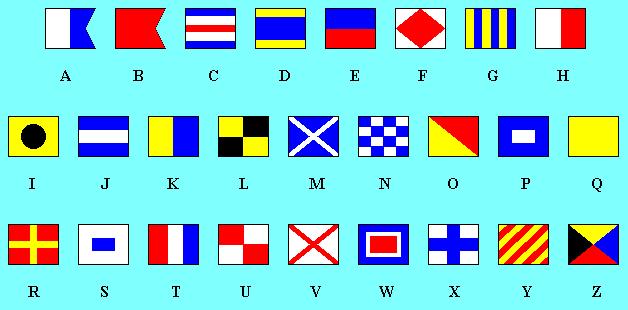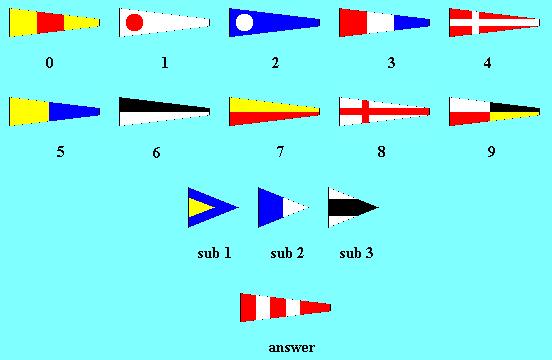Alphabets and Codes
There are many methods of communication apart from the standard alphabet. Here are some alternative alphabets and codes.
| A | 1000001 | a | 1100001 | 1 | 00110001 |
| B | 1000010 | b | 1100010 | 2 | 00110010 |
| C | 1000011 | c | 1100011 | 3 | 00110011 |
| D | 1000100 | d | 1100100 | 4 | 00110100 |
| E | 1000101 | e | 1100101 | 5 | 00110101 |
| F | 1000110 | f | 01100001 | 6 | 00110110 |
| G | 1000111 | g | 01100111 | 7 | 00110111 |
| H | 1001000 | h | 01101000 | 8 | 00111000 |
| I | 1001001 | i | 01101001 | 9 | 00111001 |
| J | 1001010 | j | 01101010 | 0 | 00110000 |
| K | 1001011 | k | 01101011 | space | 00100000 |
| L | 1001100 | l | 01101100 | / | 00101111 |
| M | 1001101 | m | 01101101 | * | 00101010 |
| N | 1001110 | n | 01101110 | + | 00101011 |
| O | 1001111 | o | 01101111 | - | 01011111 |
| P | 1010000 | p | 01110000 | & | 00100110 |
| Q | 1010001 | q | 01110001 | . | 00101110 |
| R | 1010010 | r | 01110010 | , | 00101100 |
| S | 1010011 | s | 01110011 | | 00011100 |
| T | 1010100 | t | 01110100 | £ | 10100011 |
| U | 1010101 | u | 01110101 | ( | 00101000 |
| V | 1010110 | v | 01110110 | ) | 00101001 |
| W | 1010111 | w | 01110111 | < | 60 |
| X | 1011000 | x | 01111000 | > | 62 |
| Y | 1011001 | y | 01111001 | ? | 63 |
| Z | 1011010 | z | 01111010 | @ | 64 |
| ! | 99 | ||||







































